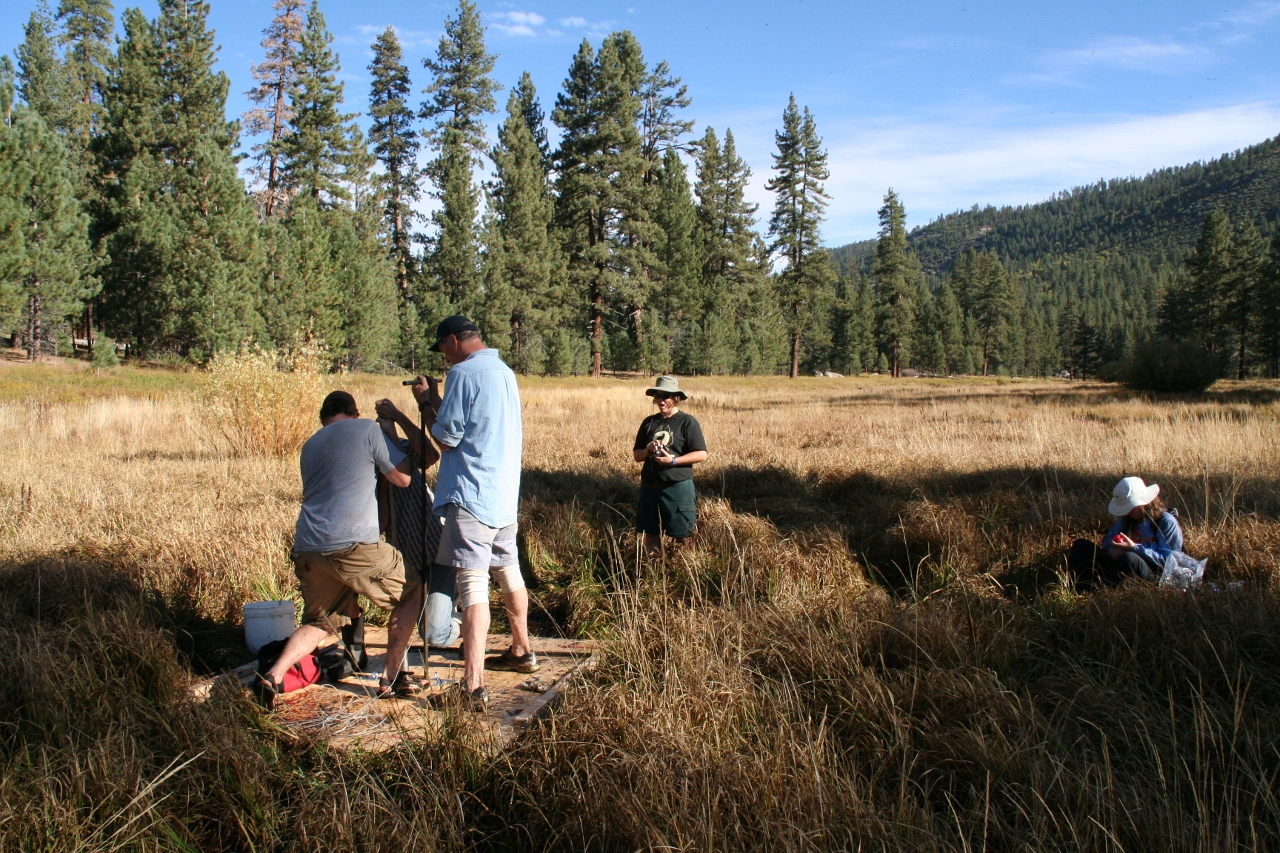Below are a few samples of different web visualizations I have created over the years. All samples below were conceptualized and completed, in their entirety, by me.
Quick links:
- Palyoplot: R Package for Quaternary Science Data Visualization (alpha)
- GIS&T BoK Exploratorium in Second Life
- Pollen stacked area chart
- Landscape modeling overlay in Google Earth
- R code for landscape model post-processing and visualization
- Google Maps: UNR Geography Graduate Student Research
Portfolio items:
- Palyoplot: R Package for Quaternary Science Data Visualization (alpha) [link]
Purpose: Stratigraphic plotting of Quaternary Science data using R
Technologies Used:- R
Future Applications: Current version is in alpha testing. Will be released to CRAN in beta
- GIS&T BoK Exploratorium in Second Life [link] [VIDEO]
Purpose: Walk-through of some functionality within this perpetual virtual environment
Technologies Used:- Second Life (game software)
- Web Scraping (JavaScript, Perl)
- A.L.I.C.E. (Artificial Linguistic Internet Computer Entity)
- AIML (Artificial Intelligence Markup Language)
- Linden Scripting Language (in-game Second Life scripting language)
- Adobe Premiere (video editing)
Future Applications: Development of virtual study area environments with live streaming data in other 3D environments (such as Unity 3D)
- Pollen stacked area chart (SAMPLE DATA) [link]
Purpose: To provide paleoecologists and palynologists an alternative visualizing to the standard pollen diagram
Technologies Used:- HTML5/CSS
- JQuery (JavaScript library)
- Dygraphs (JavaScript graphing library)
- D3 (JavaScript graphing library)
- R (backend processing of data)
Future Applications: Development of robust website allowing palynologists to load their own data for visualization and analysis (filtering, combining, excluding, etc.)
- Landscape modeling overlay in Google Earth [link] [VIDEO]
Purpose: To visualize a timeseries of landscape models produced by LANDIS-II using widely available software. LANDIS-II output is processed at 50-year interval. Biomass layers shown include fir (blue), oak (yellow), and fire severity (red)
Technologies Used:- LANDIS-II (landscape-level model)
- PnET (agent-based tree model)
- R (numerous libraries and custom functionality)
- Google Earth (display interface)
- KMZ/KML (LANDIS-II output for easy dissemination of data)
- Camtasia Studio (recording)
- Adobe Premiere (video editing)
Future Applications: This is the initial development of using widely available visualization tools for interpretation and investigation of paleolandscape models. Future development includes dissemination of KMZ files, development of visualization and interaction using 3D engines (such as Unity 3D), projection onto 3D surfaces, and further development of paleolandscape scenarios
- R code for landscape model post-processing and visualization [link]
Purpose: To georeference, process, analyze, and visualize a timeseries of raster landscape models produced by LANDIS-II. This file is used for the Google Earth landscape modeling overlay discussed above.
Technologies Used:- R (statistical software)
- (multiple libraries listed within)
- ImageMagick
Future Applications: API will be created, and the script released as an R package for other LANDIS-II modeling efforts
- Google Maps: UNR Geography Graduate Student Research [link]
Purpose: Google Maps interface for exploring the study areas and research projects of graduate students in the Geography Department at the University of Nevada, Reno
Technologies Used:- Google Maps API
- JQuery (JavaScript Library)
- infobox.js (Google dialog box library)
- JavaScript (custom programming and interface)
- HTML5/CSS (interface)
Future Applications: Current version is a prototype. Currently plan to expand to include all faculty research locations within the Department of Geography before expanding to the College of Science (Dean is very interested in having all research projects mapped for the College). Future versions will include departmental filtering, departmental subcategories, and binning of icons when zoomed to a small scale









